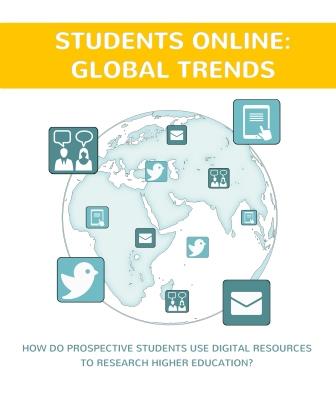How do prospective students use online resources to research universities and courses? This is the question a new report created for TopUniversities.com sets out to answer.
Due to be released for free download on Tuesday 29 July, the Students Online: Global Trends report analyzes prospective students’ attitudes towards online resources and the assets most commonly associated with different types of online resource – including official university websites, rankings sites, social networks, forums and other websites about higher education. It also considers trends in device usage, communication preferences and the major informational challenges reported by those making decisions about higher education.
Based on an international survey of more than 2,200 prospective students attending the QS World Grad School Tour in 2013 and 2014, the report highlights global and regional trends, as well as exploring differences in attitudes towards online resources when comparing those of different ages and those applying for different types of degree.
 Students’ online preferences not always as expected
Students’ online preferences not always as expected
The new report aims to provide useful insights for universities as they face the challenge of keeping pace with rapid changes in technology and in the way prospective students approach their research. While higher education institutions worldwide are stepping up investment in developing their online platforms and social media presence, little information is available to support decisions about the most effective ways to do this.
While many of the report’s key findings serve to confirm intuitive assumptions about how prospective students access information, there are also a number of more surprising trends, suggesting that some institutions may benefit from reconsidering and honing their online strategies. The findings suggest, for example, that while the number of prospective students contacting universities via social media is climbing, this is perhaps more a reflection on email response times than a genuine preference for social platforms in this context.
The survey also shows that while online resources of many varieties have become an essential part of prospective students’ research process, offline resources nonetheless remain highly valued. It seems the growth of access to information online has not stemmed demand for guidance and advice by phone or face-to-face, or for communications in print form.
To get the new report as soon as it’s released, keep an eye on out on Twitter.
